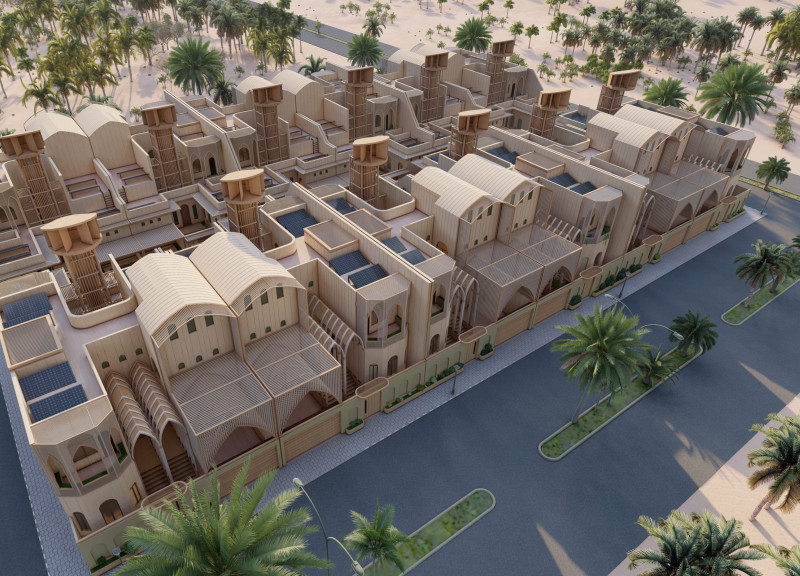5 key facts about this project
At its core, this architectural endeavor embodies a vision of inclusivity and accessibility, serving as a hub for social engagement. The layout thoughtfully accommodates a variety of functions, from communal areas to private spaces, ensuring that both social and individual needs are met. From the moment one approaches the building, the importance of its role as a community asset becomes apparent. The design promotes a flow that encourages movement and interaction among users, creating an inviting atmosphere that reflects the values of collaboration and open dialogue.
One of the most notable aspects of this project is its emphasis on materiality. The architects have opted for a selection of materials that not only fulfill structural demands but also enhance the aesthetic appeal of the building. Concrete provides the foundational strength while delivering a contemporary look, laying the groundwork for innovative spatial configurations. Large glass panels are strategically placed throughout the structure, allowing natural light to penetrate deep within its interiors. This not only reduces reliance on artificial lighting but also fosters a strong connection between indoor environments and the outdoor landscape. In addition, warm wooden accents are incorporated to soften the starkness of concrete, adding an element of comfort that resonates with occupants.
As one examines the specific architectural features, the attention to detail becomes prominent. The façade treatment employs a rhythmic composition of materials and textures, creating a visual dialogue that captivates and engages. The use of overhangs and shaded areas demonstrates an understanding of climate responsiveness, offering sheltered spaces that encourage outdoor activities even during inclement weather. These thoughtful design gestures enhance user experience while promoting energy efficiency.
The landscaping around the building is another integral component of the project, as it not only complements the architecture but also plays a vital role in ecological sustainability. Green spaces are interwoven with the structure, promoting biodiversity and providing habitats for local flora and fauna. The integration of native plants is particularly beneficial, as it reduces the need for irrigation and maintenance while contributing to the overall aesthetics.
Unique design approaches emerge from the careful consideration of space and user interaction. The project boldly employs open, flexible areas that can be adapted for various uses, allowing for dynamic reconfiguration based on the community's evolving needs. This adaptability speaks to contemporary architectural theories that prioritize resilience and multi-functionality. The inclusion of communal zones reflects an understanding of how urban life is experienced, encouraging a sense of belonging and community involvement.
Moreover, the project has been conceptualized with sustainability in mind. Innovative systems are integrated to enhance energy efficiency, including solar panels and rainwater harvesting technologies. By prioritizing these sustainable practices, the architects have not only minimized the environmental footprint of the building but have also set a benchmark for future developments in the area.
As visitors explore the project, they will find a nuanced approach to design that embodies both practicality and beauty. The harmony between the architectural designs and the surrounding environment is evident in every aspect, from the selection of materials to the thoughtful spatial organization. This project serves as an exemplary model for what modern architecture can achieve when it prioritizes user experience, sustainability, and community connectivity.
For those interested in a deeper exploration of this architectural venture, it is recommended to review the architectural plans, sections, and overall designs. These elements will provide valuable insights into the thoughtful ideas that have shaped this remarkable project, illuminating how this design can serve as a catalyst for community engagement and sustainable living.


























